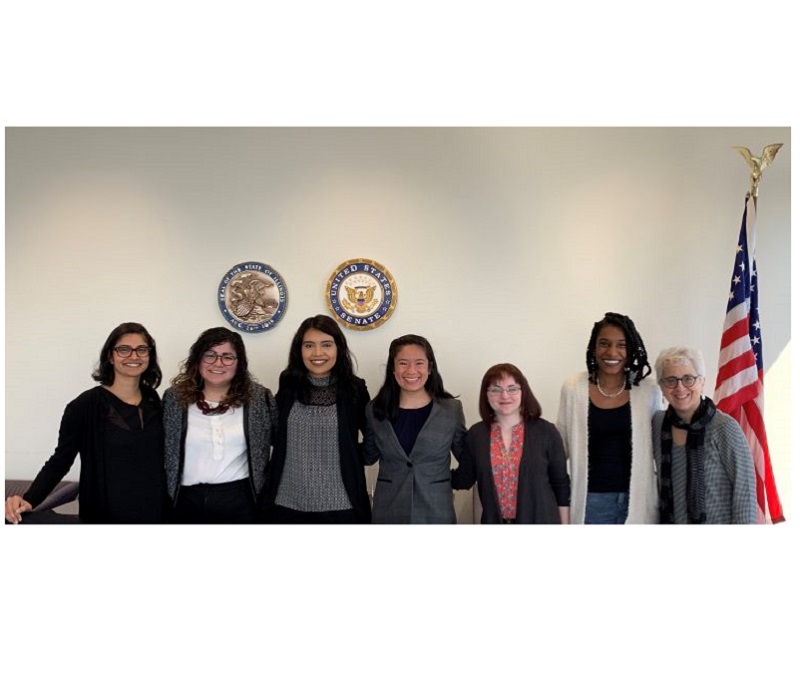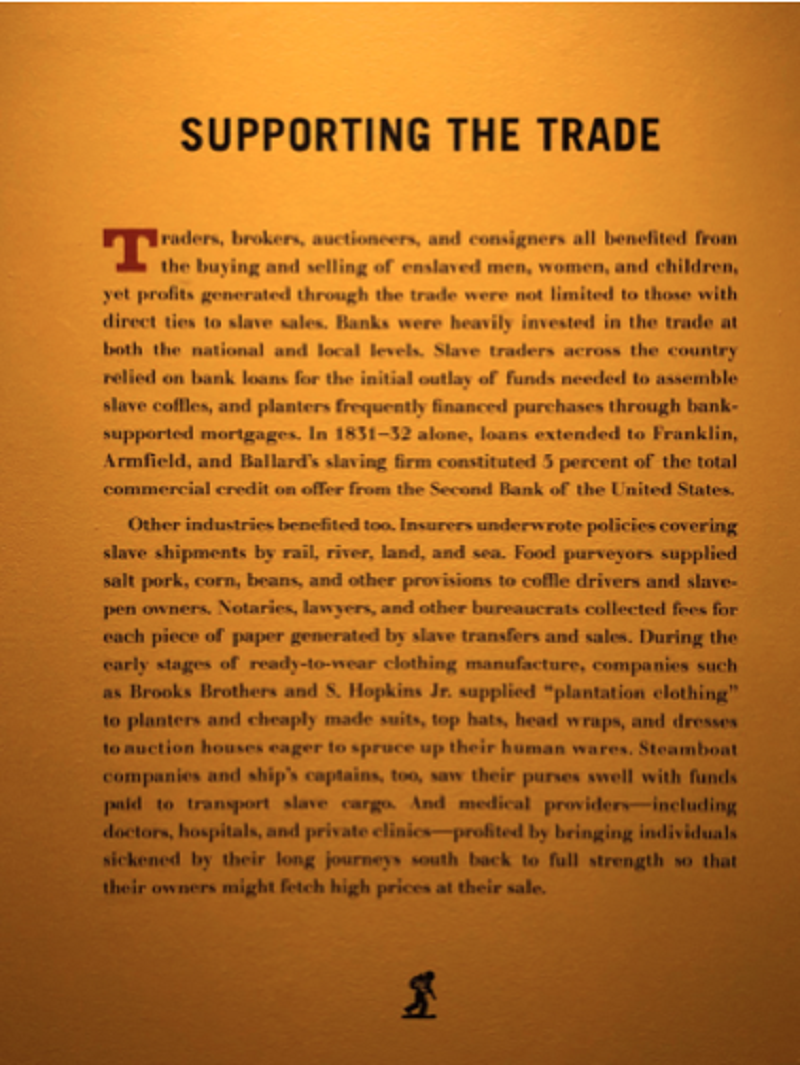Monthly Archives: April, 2019
MCH TRAINEES VISIT IL SENATORS

Posted:April 17th, 2019
On April 3, 2019, The UIC Center of Excellence in Maternal and Child Health, along with the IL LEND Program, visited the offices of Senator Duckworth and Senator Durbin to share the impact that these two MCHB-funded workforce development programs have on maternal and child health populations. Below are the reflections of two MCH trainees, Izzy Litwack and Channon Campbell following these visits.
Izzy Litwack, MPH Candidate
When I first began my MPH journey with the Center of Excellence (CoE) in Maternal and Child Health (MCH), I had no idea what that really meant. I had never heard of Title V before, and did not understand what a “training center” entailed. Throughout my two years in the MCH concentration, I have been exposed and integrated into the field of maternal and child health and I am confident I will continue to benefit from my involvement with the CoE-MCH. When I was asked to go to the offices of Senator Durbin and Senator Duckworth, I was honored to be given the chance to educate key stakeholders on all that the CoE-MCH taught me. Walking into the offices of such important people brought out so many feelings: nervousness, anxiety, and excited jitters. However, being able to stand side-by-side with Cindy and Arden, my classmate Channon, and the fantastic people from the LEND program took much of that away. I felt like I was able to share with others who are experts in maternal and child health and showcase one of the best maternal and child health training centers. I am so thankful to for the opportunity to explain to Senator Durbin and Senator Duckworth’s teams why the UIC Center of Excellence has prepared me to enter the public health work field, the impact it has had on MCH communities in both Chicago, Illinois and Region V, and why this training center will continue to thrive!
Channon Campbell, MSN, MPH Candidate
As my program comes to a close, I have been reflecting on just how fulfilled and enlightened I have felt throughout my journey at the University of Illinois at Chicago, (UIC) School of Public Health, Center of Excellence in Maternal and Child Health (MCH). There was nothing more I wanted than to be in the Maternal and Child Health concentration at UIC and when that was finally realized, I was elated. Continuing on through this program with the distinction of being a MCH Trainee has not only changed my life but has also allowed me to impact the lives of others. It has prepared me to better serve MCH populations across Illinois and beyond. It is truly a privilege to be an MCH Trainee at UIC’s Center of Excellence. When I was asked to attend the offices of Senator Dick Durbin and Senator Tammy Duckworth to shed light on and the Center, I felt great pride and honor to be able to speak about not only what I have learned but also all that the Center of Excellence does. While I was extremely nervous, I was also very excited, especially hearing my advisors, professors and peers speak to their experiences and work they do. The teams, Senator Duckworth’s and Senator Durbin’s, looked to us as critical information providers on key issues impacting maternal and child health, the necessity of our program and how integral we, LEND and the Center of Excellence, are in preparing the MCH workforce and serving these populations. It was also affirming to hear that many of the initiatives supported by our senators are some of issues and topics near and dear to my heart, such as equity for black mothers and vaccinations. This program has provided me with the knowledge and tools to be among the best public health professionals, especially in maternal and child health, and I know that the Senators’ teams felt and understood this. We communicated with confidence that this training center matters and is pivotal to the health of MCH populations. I am so very thankful for this opportunity and grateful to be an MCH Trainee at UIC.
HOW DEHUMANIZATION BUILDS POWER AND BRINGS VIOLENCE

Posted: April 9th, 2019
Authors: Esther Bier, MPH(c) Community Health Sciences, Maternal and Child Health &
Gabrielle Lodge, MPH(c) Community Health Sciences, Maternal and Child Health
One might not expect a U.S. slave trade exhibit to be housed in a Holocaust Museum. Yet on a dreary Saturday afternoon in the middle of Black History Month, roughly 100 people attended a guided tour of the exhibit entitled “Purchased Lives: The American Slave Trade from 1808-1865” within the Illinois Holocaust Museum. The exhibit walls were adorned with inventory lists of people for sale, images of living quarters of enslaved people, and testimonials of enslaved people. A large rectangular wooden crate served as a replication of the stage on which the enslaved were auctioned next to original photos of Black people standing atop the original structure. A metal choker, complete with hinges and a lock, was encased in glass a few feet away. Two horn-like metal structures topped with bells rose out vertically from the choker, once used to ensure that an enslaved person was as recognizable as they were loud.
The exhibit focused on the transactional nature of slavery, with specific attention paid to how the invention of the cotton gin and the prohibition of the transatlantic slave trade intensified the economic incentives of slave labor. Invented in 1793, the cotton gin expedited the separation of cotton fibers from seeds, increasing demand for cotton processing and bodies to work the land (The History Channel, 2018). Meanwhile, the abolition of the continued import of new slaves in 1808 meant that slaves already in the US were of greater value. With a “limited supply” and higher demand, slaves were a hot commodity. Signage, at the time tacked to trees and buildings, listed upcoming slaves auctions and proudly displayed the monetary value of humans. Attending a slave auction was a social affair for modern Whites, who were pictured in formal clothing worthy of their slave-owning status.
Slavery was the foundation of the antebellum Southern economy and an ever-present feature in New Orleans where thousands of slaves were transported on the Mississippi River. Every aspect of the New Orleans economy depended on slavery, either directly or indirectly. Doctors profited from treating ill slaves whose masters were intent on selling healthy human subjects. Clothing retailers (such as Brooks Brothers) profited from manufacturing slave uniforms worn in the house and on the fields. Banks profited by financing loans necessary to acquire slaves. Steamboat companies provided the vessels that transported kidnapped Africans to American shores(Illinois Holocaust Museum, 2019). In this manner, all white people (whether slave owners or not) financially benefited from the slave trade and depended on its survival.
This economic theme exemplified why this exhibit fit within the Illinois Holocaust Museum. Slavery was a system predicated on dehumanizing a class of people considered inferior. The commodification of “sub-humans” ensured free labor that lined the pockets of White people and helped ensure success to their descendants. The subservience of Black people was justified through the bible, science, and lore until the buying and selling of people became quotidian. This hatred of the “other” that spurred dehumanization is the same hatred that justified Nazi Germany and the Holocaust. While there are multiple differences, the violence and trauma of the Holocaust is an extension of the violence and trauma of slavery.
After successfully dehumanizing enslaved people, White people profited off Black bodies – particularly Black women’s bodies – in addition to their labor. “The slave owner’s exploitation of the Black woman’s sexuality was one of the most significant factors differentiating the experience of slavery for males and females” (PBS, 2004). Forcing Black enslave women to give birth, a practice known as “slave breeding,” that was as common as it was lucrative. In this manner, slave populations increased through reproduction despite the discontinuation of the transatlantic slave trade. Enslaved parents lived in daily fear that their enslaved children could be taken from them at any moment (Brown, 2018).
The United States has a long history of controlling women’s bodies and separating families. Children born into slavery could be bought and sold at will by their slave owners. In the 1800’s Native American children were routinely separated from their families and forced to attend boarding schools to facilitate assimilation into “civilized” life (Brown, 2018). After the 1941 Pearl Harbor attack, the U.S. government forced Japanese families to relocate to internment camps, uprooting entire communities of mostly American citizens (Purtill, 2018). Just last summer, the U.S. separated parents from their children at the southern border to deter illegal border crossing, despite such a policy violating international law (Cumming-Bruce, 2018). This pattern of separation serves a racist agenda intent on eradicating anyone deemed foreign and forcing anyone who remains to assimilate.
The ramifications of these racist policies remain to this day. Police brutality, food insecurity, and school closures disproportionately afflict communities of color. Today, one out of every ten Black children has an incarcerated parent (Hager, 2017). Regardless of educational attainment and financial status, maternal mortality kills more Black women than white women (Villarosa, 2018). Our culture of intolerance and racism is literally tearing families apart and killing people. The “Purchased Lives” exhibit demonstrates that the hatred underpinning slavery did not end with the abolition of slavery. Such hatred perpetuates White Supremacy while inspiring genocide, oppression, and generations of trauma. It is the resulting trauma and oppression that public health seeks to address and ameliorate. Despite the sluggish pace of change, this pressing work beckons us to envision and create a world built on love, not hate.
Purchased Live: The American Slave Trade from 1808-1865 is open until August 25th 2019. Admission is free on Saturdays and every 10th of the month.
References
- Brown, D. (2018). “Barbaric”: America’s Cruel History of Separating Children from Their Parents. Washington Post, Retrieved from https://www.washingtonpost.com/news/retropolis/wp/2018/05/31/barbaric-americas-cruel-history-of-separating-children-from-their-parents/
- Cumming-Bruce, N. (2018, June 5,). Taking Migrant Children from Parents is Illegal, U.N. Tells U.S. The New York Times Retrieved from https://www.nytimes.com/2018/06/05/world/americas/us-un-migrant-children-families.html
- Hager, E. (2017). A mass incarceration mystery. Retrieved from https://www.themarshallproject.org/2017/12/15/a-mass-incarceration-mystery
- Purtill, C. (2018). Japanese-American Internment Camps Taught Us What Happens to the Health of Separated Families. Retrieved from https://qz.com/1311736/japanese-american-internment-camps-taught-us-what-happens-to-the-health-of-separated-families/
- Illinois Holocaust Museum. (2019). Purchased Live: The American Slave Trade from 1808-1865.
- The History Channel. (2018). Cotton Gin and Eli Whitney. Retrieved from https://www.history.com/topics/inventions/cotton-gin-and-eli-whitney
- PBS. (2004). The Slave Experience: Men, Women, and Gender. https://www.thirteen.org/wnet/slavery/experience/gender/history2.html
- Villarosa, L. (2018, April 11,). Why America’s Black Mothers and Babies are in a Life-or-Death Crisis. The New York Times Retrieved from https://www.nytimes.com/2018/04/11/magazine/black-mothers-babies-death-maternal-mortality.html